Emperor Kammu › Empire › Hanno: Carthaginian Explorer » Origins and History
Articles and Definitions › Contents
- Emperor Kammu › Who Was?
- Empire › Ancient History
- Hanno: Carthaginian Explorer › Who Was?
Ancient civilizations › Historical places, and their characters
Emperor Kammu › Who Was?
Definition and Origins

Emperor Kammu (aka Kanmu) reigned in ancient Japan from 781 to 806 CE and is most noted for relocating the capital to Heiankyo (Kyoto) in 794 CE. Kammu was one of the most powerful emperors Japan had seen or would ever see, and his reign witnessed a restructuring of the royal household and government, reducing the state's costs and making it better able to manage the country and fight corruption.
CROWN PRINCE
Kammu was born in 737 CE, his father was Emperor Konin (r. 770-781 CE) and his mother a Korean commoner. Initially removed from the line of succession, a common practice in the large families of emperors, he was later reinstated thanks to his supporters in the powerful Fujiwara clan which dominated most of the important positions of government and the imperial court. In 773 CE Kammu was officially selected as his father's successor, no doubt helped by his influential uncle Fujiwara no Momokawa. In 781 CE Emperor Konin abdicated, and his son Kammu was made emperor. Kammu, as was the tradition, gave his reign an era name or nengo. His choice was Enryaku, meaning 'prolonged succession,' which would prove apt for his 25-year reign.
FROM NARA TO HEIANKYO
During the Nara Period (710-794 CE) the Japanese imperial court was beset by internal conflicts motivated by the aristocracy battling each other for favours and positions, and an excessive influence on policy from the Buddhist sects whose temples were dotted around the capital. There was also a failed plot to seize power in 782 CE by descendants of Emperor Temmu, who had been displaced when Konin had taken the throne.
KAMMU WAS ABLE TO SWEEP AWAY THE CLUTTER OF PREVIOUS REGIMES & SET HIMSELF UP AS THE ALL-POWERFUL SOVEREIGN SURROUNDED BY SUPPORTERS WHO OWED THEIR POSITION DIRECTLY TO HIM.
Eventually, the situation resulted in Emperor Kammu moving the capital from Nara to Nagaokakyo on the Yodo River in 784 CE. The new site did not last long, though, after the assassination in the palace of one of Kammu's chief advisors (Fujiwara no Tanetsugu), the untimely death of one of Kammu's wives and a son, a severe flood and an epidemic, which all gave Nagaokakyo an air of bad luck. Indeed, the ringleader of the assassination plot, Prince Sawara, Kammu's younger brother, was exiled, but he died of self-inflicted starvation and it was thought that his bad spirit or kami was responsible for the disasters. It was, thus, decided to relocate again, this time to Heiankyo in 794 CE. This move marked the beginning of the Heian Period which would last into the 12th century CE, and Heiankyo, or Kyoto as it became known, would remain the capital of Japan for another thousand years.
Heiankyo, meaning 'the capital of peace and tranquillity,' was laid out on a regular grid plan along Chinese models. The aristocracy had fine palaces with their own carefully landscaped gardens and a large pleasure park was built south of the royal palace (Daidairi). No Buddhist temples were permitted in the central part of the city and no clergy were permitted to relocate from Nara, although, Kammu did permit the construction of two temples either side of the city's Rashomon gate: the Sai-ji (West Temple ) and To-ji (East Temple). The latter was expanded by the famous monk and founder of Shingon BuddhismKukai in 823 CE and was given its splendid pagoda, Japan's largest, in 826 CE. Kammu did not neglect the Shinto religioneither and built the important Hirano Jinja shrine in 794 CE. The capital, with its wide avenues and artisan quarters for artists, metalworkers and potters, became one of the great cities of East Asia.

Model of Kyoto
GOVERNMENT
Emperor Kammu continued to apply Chinese principles to government, especially Confucianism and Taoist interpretation of omens. However, he did prune the state administration which had become unwieldy and too costly. The number of civil servants was curtailed and some ministries suppressed. Kammu also formed a small body of counsellors to act as an advisory body, the household treasury office ( kurando - dokoro ). In these reforms, Kammu was aided by the fortunate timing that saw most of the old powerful clan leaders pass away and their successors struggle to find the resources to relocate twice to the new capitals.
The bloated royal court was similarly trimmed in 805 CE in a process known as 'dynastic shedding' with over 100 princes and princesses reduced from royal to noble status and given clan names such as Minamoto, Taira and Ariwara. At the same time loyal followers were given generous land grants or key government positions (many were simply left vacant too) so that the emperor was able to sweep away the clutter of previous regimes and set himself up as the supreme and all-powerful sovereign surrounded by his supporters who owed their position and status directly to him.
KAMMU WAS HIMSELF A FOLLOWER OF BUDDHISM & HIS POLICIES WERE AIMED AT CLEANING UP THE RELIGION RATHER THAN REPRESSING IT.
Another important policy change instigated by Kammu was the ending of conscription of peasants into the militia of the provinces. Farmers had not proved to be very effective warriors, and when not involved in actual combat, they had been abused by local commanders who pressed them into labour service for their own ends. The state now paid professional warriors, but their necessity was rare, being employed only in occasional expeditions against pirates and in border skirmishes with the Emishi tribes in the north of Japan. The Emishi had finally been subdued after decades of indecisive battles following major expeditions in 794 CE and 801 CE led by the two seii taishogun Otomo no Otomaro and Sakanoue no Tamuramaro respectively. In the latter campaign, a fort was built at Isawa to ensure there were no further hostilities.

Pagoda, To-ji Temple
One consequence of the policy to end conscription was that large estate owners began to form their own private armies of samurai to protect their interests, and these would eventually give certain clans such as the Taira and Minamoto the means to try and grab political power for themselves. To fill the gap left by the downgrading of the army the police force was given greater powers, which included a judicial function, and a small force of armed youths ( kondei ) was created to guard government property in the provinces.
Attempts were made to reduce corruption in the provinces where administrators were left to their own devices to extract taxes in kind. A body was established called the kageyushi which helped ensure tax records were maintained and an audit made whenever there was a transfer of governor. Still, the long-term effect of having local strongmen backed by their own private army and syphoning off state taxes was a gradual reduction in the economic power of the central government. By the end of the Heian Period in the 12th century CE, these warlords would seize political power for themselves and keep it for six centuries.
DEATH & DEIFICATION
Kammu died in 806 CE, and he was succeeded by his sons Emperor Heizei (r. 806-809 CE), Emperor Saga (r. 809-823 CE), and Emperor Junna (823-833 CE). Despite this dynastic continuity Kammu's reign was a watershed for Japanese government, and his successors would have to battle with powerful clans who sought to ever reduce the power of the emperor, as the historian WHMcCullough summarises,
Kammu was the last of a line of puissant, capital-building monarchs who were able to mobilize the entire country's wealth and military power for national or dynastic purposes. After him, the limelight of central political history shifted steadily and rapidly away from the person of the sovereign toward erstwhile holders of nominally subordinate court posts…[by 850 CE] the Fujiwara clan was well on its way to complete domination of both the emperor and the organs of his statutory government. (Whitney Hall, 25)
Emperor Kammu was enshrined as the deity or kami spirit of the Heian Jingu shrine in Kyoto, founded in 1895 CE on the 1,100th anniversary of the city's foundation as the capital of Japan.
This article was made possible with generous support from the Great Britain Sasakawa Foundation.
Empire › Ancient History
Definition and Origins

An empire is a political construct in which one state dominates over another state, or a series of states. At its heart, an empire is ruled by an emperor, even though many states in history without an emperor at their head are called "empires".
At its core, an empire is the domination of one state by another. This idea lies at the heart of the common use of the term 'empire' and is as old as state-building itself. The earliest city -states tried to grow by taking over their neighbours. Where they succeeded, a single larger state might form, but more often the aggressor became a core state holding sway over a number of semi-independent peripheral states – a halfway stage to a larger state. This core state became more than merely the strongest in the region.
AN EMPIRE IS AN UNEQUAL RELATIONSHIP BETWEEN A CORE STATE AND A PERIPHERY OF ONE OR MORE STATES CONTROLLED FROM THE CORE.
Sparta was the leader of a league of states but had little interest in interfering with their domestic politics. Athens, by contrast, also led a league but forced a supervised Athenian-style democracy on its supposedly independent members. Sparta was a hegemonic state, the strongest of a group, while Athens was interventionist and thereby imperial. The fact that Athens replaced tyrants with democratic government did not affect the imperial nature of this relationship.
An empire is an unequal relationship between a core state and a periphery of one or more states controlled from the core. On the simplest level, control means military occupation or other formal political intervention, but it can also cover informal economic or cultural influence. Economic pressure by itself has frequently been enough to manipulate governments. Religion, ideology or other cultural forces have habitually accompanied political or economic persuasion.
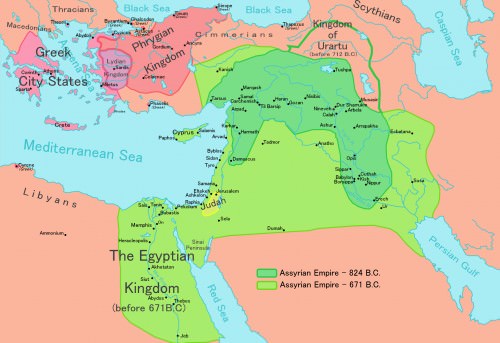
Neo-Assyrian Empire
The culture of the periphery, however, can exert its own pull and threaten to absorb a conquering power, most famously in the case of the Mongol conquest of China. As such, cultural imperialism is not a necessary component of empire.
In fact, neither is cultural difference per se, given the difficulty of deciding where one culture ends and another begins. In the modern era, the borders of the nation state have tried to settle this matter, but the nation state itself formed around a core state that standardized language and other aspects of culture in a way that typically alienated outlying regions. In the end, the acid test for cultural identity has remained solidarity in the face of a common enemy and this is a test most empires have at some stage passed.
To explain how empires, thus defined, have risen, persisted and fallen over the millennia, the core, the periphery and the international situation each need to be examined.
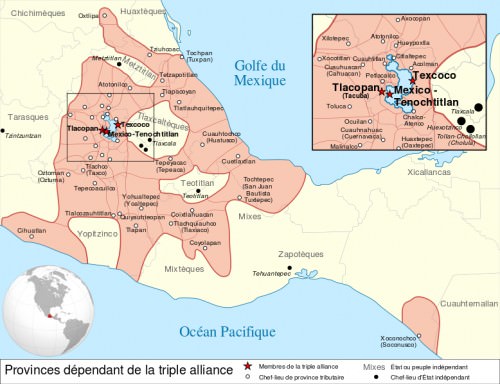
Aztec Empire
The core state is the place to look to find various motives for expansion, from the dream of imposing an imperial peace on squabbling states to the desire for economic exploitation, lust for the glory of conquest or zeal for evangelism, religious or ideological.
The periphery is the place to look for crucial resistance or collaboration. Specifically, the fates of many empires have hinged on peripheral leaders deciding where their best interests lay. Often, the core can provide an account of an empire's rise, while the periphery better explains its persistence.
Examples of Empires in the ancient world include those of Sumeria, Babylonia, Assyria, that of the Hittites, the Egyptian, the Persian, the Macedonian, the Inca, the Aztec, and, most famously, the Roman.
Hanno: Carthaginian Explorer › Who Was?
Ancient Civilizations
In the 5th century BCE, the Carthaginian explorer Hanno sailed beyond the Pillars of Hercules, out of the Mediterranean and into hitherto unknown territory down the Atlantic coast of Africa. In his search to find new resources and trading opportunities he encountered such exotic and unfamiliar sights as restless natives, swift-footed pygmies, gorillas, and erupting volcanoes.The expedition became, even in antiquity, one of the most celebrated voyages of discovery ever undertaken.
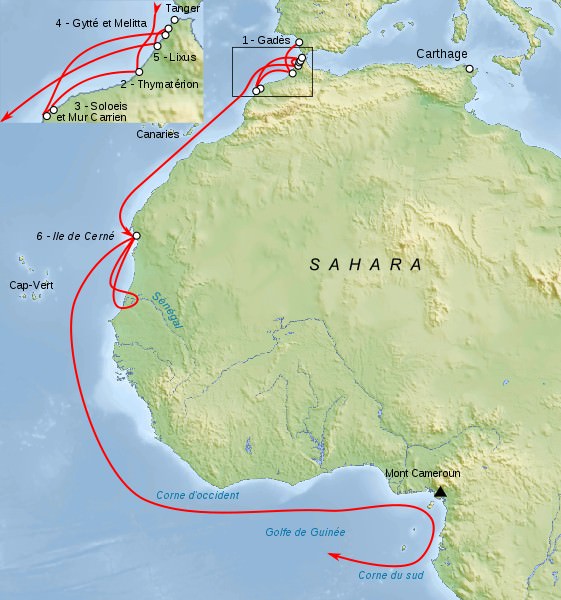
Voyage of Hanno the Carthaginian Explorer
SOURCES
The first-hand account of Hanno's voyage survived through antiquity and into the modern age via a single medieval manuscript, itself a copy of a Greek translation made from the Punic original which was carved on a dedicatory stele c. 400 BCE. Scholars consider there to be at least two missing parts of the surviving text, including the conclusion. The work, titled simply The Periplus (Coastal Voyage), is short, but such is the paucity of Punic literature which survives it is invaluable far beyond its subject matter of seafaring and exploration. The original surviving manuscript is part of the Codex Palatines Graecus 398 and resides in the University of Heidelberg library.
HANNO
Hanno is referred to in the text by the Greek term basileus which is almost certainly a translation of the Punic suffete, the highest administrative role in the Carthaginian government, often translated as 'magistrate'. His name is a common one in the powerful Carthaginian clan the Magonids and would suggest he was a member of it. Beyond this, we have no other information about the leader of the expedition. The Roman historian Justin mentions in passing a Hanno who fought a warwith Mauritanian natives in the mid-5th century BCE. Given that Hanno's expedition established colonies in this area (Morocco) and would probably have caused competition with local tribes, this may well be the same person. Other ancient sources which refer to the expedition include Herodotus in the 5th century BCE, Palaephatus in the 4th century BCE, the Aristotelian Mirabilium auscultationes, and various later Roman writers such as Pliny the Elder and Arian who likely consulted a 1st-century CE work by Juba II of Mauretania titled The Wanderings of Hanno.
The precise date of the voyage is not stated but was probably undertaken sometime between the late 6th century BCE and c.425 BCE. The Carthaginian ships were made from wood and had a single sail with the possibility of oar power if necessary.They did not have the compass and so relied on the stars, especially Ursa Minor, for navigation. These considerations lead some scholars to argue a particular final destination for the expedition based on the time available, as we shall see later.
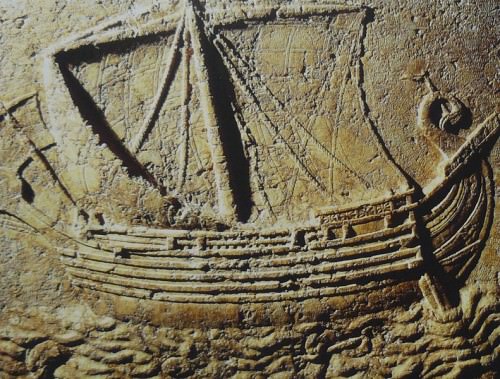
Phoenician-Punic Ship
Below is Hanno's text in full (modern names, where identifiable, are added in parentheses by this author):
This is the story of the long voyage of Hanno king of the Carthaginians into Libyan lands beyond the Pillars of Heracles [Straits of Gibraltar], which he dedicated on a tablet in the temple of Kronos [Baal Hammon]:I The Carthaginians decided that Hanno should sail beyond the Pillars of Heracles and found cities of Libyphoenicians [Carthaginians]. He set sail with sixty penteconters and about thirty thousand men and women, and provisions and other necessaries.II After sailing beyond the Pillars for two days we founded the first city which we called Thymiaterion [Tangier].Below it was a large plain.III Sailing thence westward we came to Soloeis, a Libyan promontory covered with trees. There we founded a temple to Poseidon.IV Journeying eastward for half a day we reached a lake not far from the sea, covered with a great growth of tall reeds, where elephants and many other wild animals fed.V A day's journey beyond this lake we founded cities on the coast called Karikon Teichos, Gytte, Akra, Melitta, and Arambys.VI Passing on from there we came to the large river Lixos [the Draa in Morocco], flowing from Libya, beside which nomads called Lixitae [ Berbers ] pastured their flocks. We stayed some time with them and became friends.VII Inland from there dwelt inhospitable Ethiopians [negroes] in a land ridden with wild beasts and hemmed in by great mountains. They say that Lixos flows down from there and that among these mountains Troglodytes of strange appearance dwell, who according to the Lixitae can run more swiftly than horses.VIII Taking interpreters from the Lixitae we sailed south along the desert [Sahara] shore for two days and then for one day eastward and found a small island five stades [c. 1 km] in circumference at the farther end of a gulf. We made a settlement there and called it Cerne. We judged from our journey that it was directly opposite Carthage, for the voyage from Carthage to the Pillars and from there to Cerne seemed alike.IX From here sailing up a big river called Chretes [Senegal] we reached a lake, in which were three islands bigger than Cerne. Completing a day's sail from here we came to the end of the lake, overhung by some very high mountains crowded with savages clad in skins of wild beasts, who stoned us and beat us off and prevented us from disembarking.X Sailing from there we came to another big wide river, teeming with crocodiles and hippopotamuses. We turned again from there and came back to Cerne.XI We sailed south for twelve days from there, clinging to the coast, which was all along occupied by Ethiopians who did not stay their ground, but fled from us. Their speech was unintelligible, even to our Lixitae.XII On the last day we came to anchor by some high mountains clad with trees whose wood was sweet-smelling and mottled.XIII Sailing round these for two days we reached an immense gulf, on either shore of which was a plain where by night we saw big and little fires flaming up at intervals everywhere [Grass fires?].XIV Taking on water here, we sailed on for five days along the coast until we came to a great bay which our interpreters called the Horn of the West. In it was a large island and in the island a salt-water lake, within which was another island where we disembarked. By day we could see nothing but a forest, but by night we saw many fires burning and we heard the sound of flutes and of beating of cymbals and drums and a great din of voices.Fear came upon us and the soothsayers bade us leave the island.XV We sailed thence in haste and skirted a fiery coast replete with burning incense. Great streams of fire and lava poured down into the sea and the land was unapproachable because of the heat.XVI We left there hurriedly in fear and sailing for four days we saw the land by night full of flames. In the middle was a high flame taller than the rest, reaching, as it seemed, the stars. By day it was seen to be a very high mountain called the Chariot of the Gods [Mt. Cameroon?].XVII Thence sailing for three days past fiery lava flows we reached a gulf called the Horn of the South.XVIII At the farther end of this bay was an island, like the first, with a lake, within which was another island full, of savages. By far the greater number were women with shaggy bodies, whom our interpreters called Gorillas [Pygmies?]. Chasing them we were unable to catch any of the men, all of whom, being used to climbing precipices, got away, defending themselves by throwing stones. But we caught three women, who bit and mangled those who carried them off, being unwilling to follow them. We killed them, however, and flayed them and brought their skins back to Carthage. For we did not sail farther as our supplies gave out. (Quoted in Moscati, 182-3)
ASSESSMENT
The Greek translation of Hanno's text has taken some liberties with names, and there are geographical inaccuracies. The historian S. Moscati plausibly suggests that these may have been deliberately included to prevent unwanted competitors muscling in on Carthaginian trade relations. The final part of the journey is debated amongst historians. Some suggest Hanno reached only Sierra Leone, others that he went as far south as the Cameroons or Gabon. Even the shorter journey, which some prefer because Hanno would have struggled in the time to reach further south, would still have involved an outbound leg of almost 5,000 kilometres (3,000 miles).
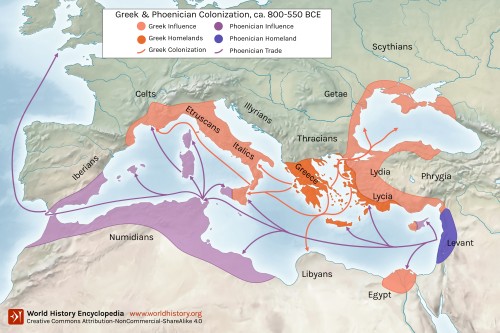
Greek and Phoenician Colonization
The fact that Carthaginians sailed down the west coast of Africa is corroborated by Herodotus (who could, of course, have merely been paraphrasing the Periplus ) in Book IV:196 of his Histories and by the fact that the whole expedition was to found colonies, strongly suggesting that the Carthaginians had visited the coast previously in order to ascertain it was worthwhile sending Hanno's large fleet. Pliny the Elder mentions that the voyage began from Gades ( Cadiz ) and that, on returning, the 'gorilla' skins were kept in the temple of Juno (Tanit or Astarte) at Carthage. The 'gorillas' of the text is actually the most significant legacy of the voyage as that term, of uncertain significance in the Hanno text but probably not referring to animals (chimpanzees being often suggested), was applied by Thomas Savage, a naturalist of the 19th century CE, to the now familiar large African apes.
Other Carthaginian travellers soon followed and exploited the newfound sources of gold, the bartering for which is described by Herodotus. Then another famous traveller, the Greek Polybius, followed in the wake of Hanno and sailed down the same Atlantic coastline in the 2nd century BCE. For whatever reason, though, significant further exploration of the African coast and interior would have to wait another 1,000 years.
LICENSE:
Article based on information obtained from these sources:with permission from the Website Ancient History Encyclopedia
Content is available under License Creative Commons: Attribution-NonCommercial-ShareAlike 3.0 Unported. CC-BY-NC-SA License